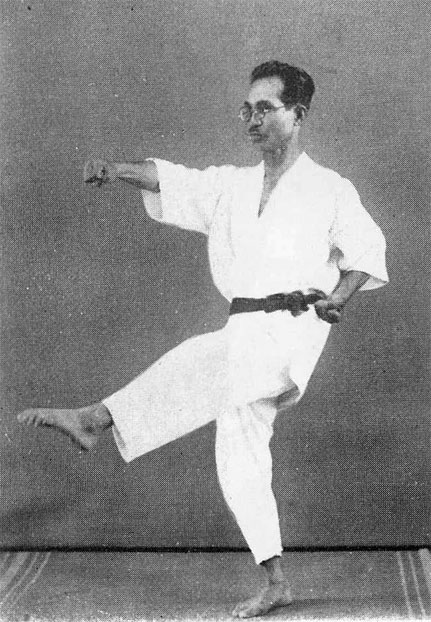Today I thought I would share one of my absolute favourite articles ever written on Karate.
It’s about the different “styles” that seem to exist in Karate, and it is written by a gentleman named Kanken Toyama (1888-1966).
Kanken Toyama was – apart from being a schoolteacher – a master of Karate. He began his Karate training at 9 years old under “the father of modern Karate”, Itosu Anko, but later moves to Taiwan and studied the Chinese styles. Given his diverse martial arts background, the Japanese government soon recognized Toyama, and awarded him the title of master instructor.
In 1946, Toyama founded the All Japan Karate-Do Federation (AJKF) with the intention of unifying the various forms of Karate of Japan and Okinawa under one governing organization. I can’t really say he succeeded…
Anyway, here is a picture of the man in his younger years:

I think I even visited his grave last year, but I can’t seem to find the right picture… Well, enough with the introduction, here is part one of his article/essay about styles in Karate.
Enjoy!
How many styles does Karate have? I have been asked this question numerous times but usually by those that really do not understand the essential elements of a martial art.
If one seriously thinks about these essential elements that make up a martial art, one then can easily understand the reasoning that Karate does not have any one style. Karate molds an individual to be the only object of defense or offense and, through this, it teaches the basic concept of self-protection.
The exquisite skill of Karate that is based on self-protection does not need to contain several different “styles,” but a combination of what works or is effective. In other words, Sumo wrestlers, boxers and airplane pilots do not have any one special style and neither does Karate. The methods of training, techniques and successes can only be achieved through sheer ability!
The orthodox Karate has, in reality, only one style but what does the word “style” mean? Your methods of etiquette and formality or the various methods of flower arrangement have several different “styles” but they are reasonably the same. People set forth a criteria on how to create a beautiful flower arrangement using the same material or how to show respect to one another as a method of etiquette.
It is understandable that people in Japan show respect by bowing and people of Europe and America show the same respect by shaking hands or saluting. As far as etiquette and formality goes, there are several styles from different points of view, ideology and social standing but they accomplish the same purpose.
So, one can now understand that although there maybe a number of ways of doing things, they all accomplish the same end and purpose.
And that is what counts.
Now, let us discuss Karate styles. One of the major styles that come to our attention is Shorin-ryu (ryu meaning a way or style that was created from an individual’s point of view, belief or ideology). Shorei-ryu, Goju-ryu and Shito-ryu are other styles that are very closely related and this will be discussed.
Stay tuned for part 2…



21 Comments